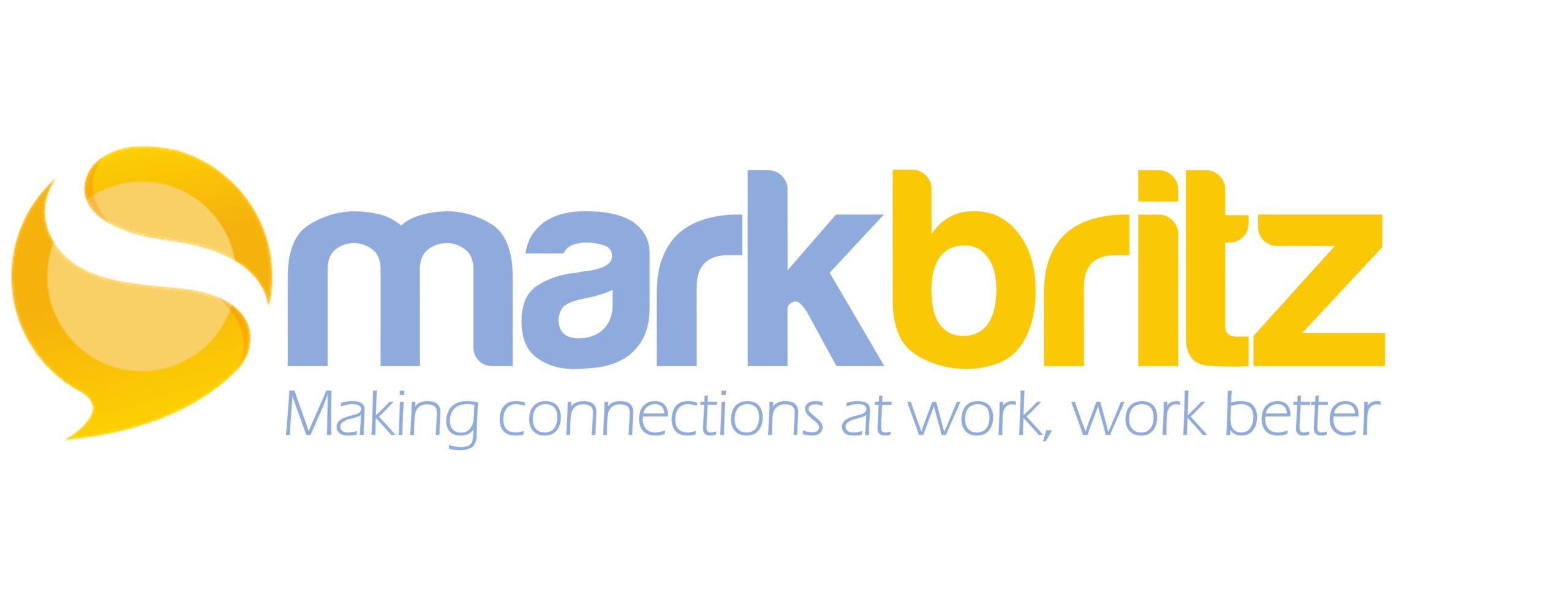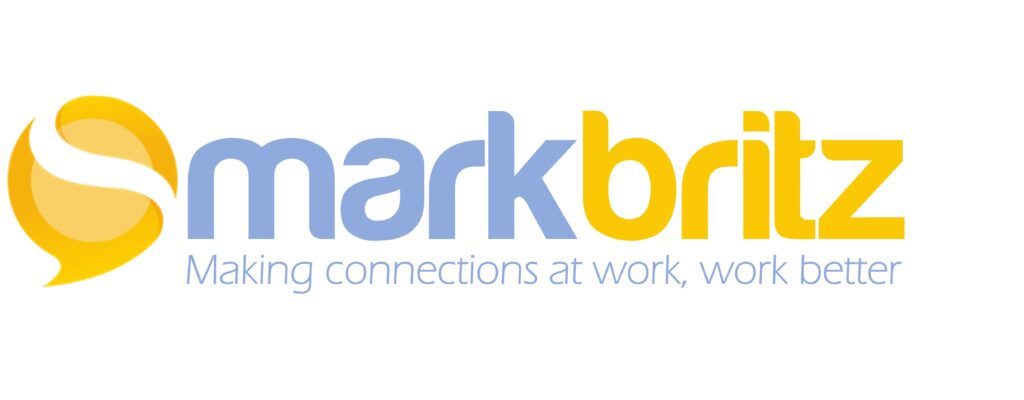I unfortunately missed #ESNChat this past week. If you’re not familiar, it’s a regular chat about enterprise social platform use and value. Their topic this week, on social learning and the ESN, hit a sweet spot for me as I’ve done much with social tech inside organizations. I saw a slew of great responses from the likes of Helen Blundenand Peter Gryzbowski and Noah Sparks in particular. I may have missed the conversation but thought that these were some great questions that I’d like to answer. So here goes.
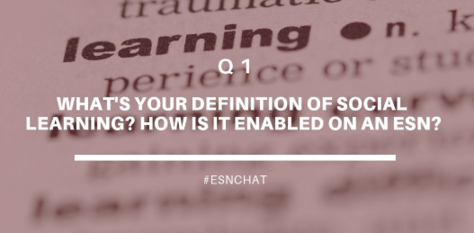
A1. Learning with and through each other. conversation, watching, modeling, mimicking. My definition is basically just what The definition is. See Bandura. How is it enabled? I don’t think it’s enabled as much as an ESN serves to extend & expand human behaviors. Like any tech it can amplify and help conversation and content last and to be built upon over time… Knowledge doesn’t exist within us but between us, in our conversations after all.
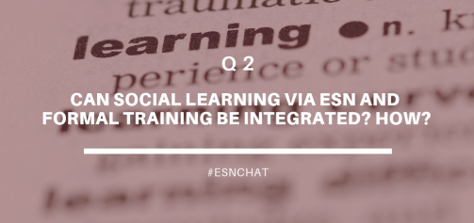
A2. An ESN is just a tool that extends and expands community, collaboration & sharing. Real Learning (ala Charles Jennings) is experience, practice conversation and reflection. An ESN gives one the opportunity to discuss new formal learning with others and openly reflect on it’s application. It’s a great tool for a feedback loop from classroom to workflow. The information on effective application can get back to L&D to make modifications and the tool can be used as post-event performance support.
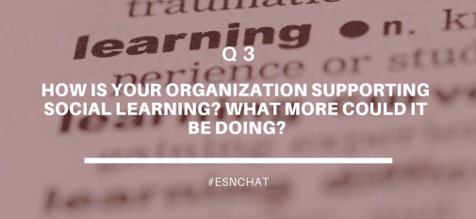
A3. If anything organizations don’t do enough to enable it/encourage it. It’s happening with or without technology but can be limited by systems (human) that restrain sharing and openness. Those, I’d argue, need to be addressed before any tech implemented.
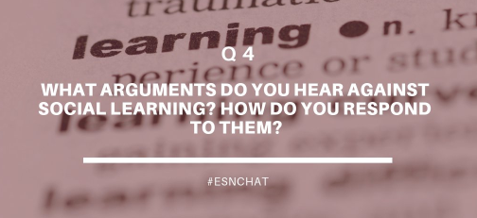
A4. Two big ones. First, the “I wouldn’t want my surgeon to have learned only by social learning” and second, “you can’t measure it”. Social IS a huge component of how we learn best. Other approaches are necessary (training) but even that will be limited in effectiveness when people cannot connect & reflect and get feedback. And then the measurement argument. Drop “social” from the equation. How do you measure learning in any fashion? If you say completions and seat time for formal, I’ll counter with conversation and meetings with social. Both bad because both are just mile markers not the finish line. The real measure is results, application, better performance. That’s where learning is realized regardless if it’s social or training.
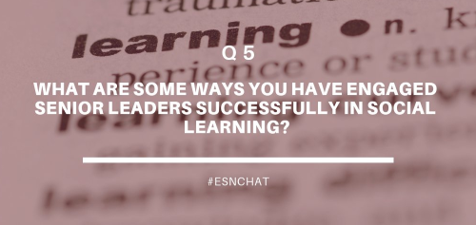
A5. People don’t argue with their own data. I’ve asked the c-suite in several organizations where they’ve had their most impactful learning experiences. consistently, 80+% have responded completing a task. That means it happens in their work which, probing deeper, wasn’t done alone. Once that’s established, we move to how we help employees learn more in the workflow.
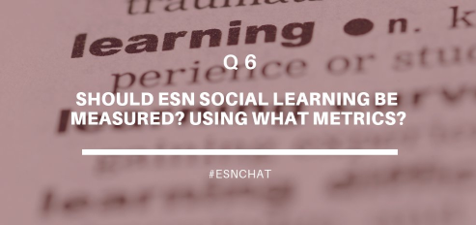
A6. Sure. See Q4 answer in that you really can’t measure the vehicle itself but data does help to realize value and realized value spreads like wildfire! Some things to look for as leading indicators of learning: questions asked, answered, rate of response, level of response, application of answers, use of FAQ’s, bookmarking of solution content, and my favorite one, from Paul Simbeck-Hampson, “thank you’s”.
Sorry I couldn’t attend, there could have been far greater learning for me had I been in the conversation ;).
